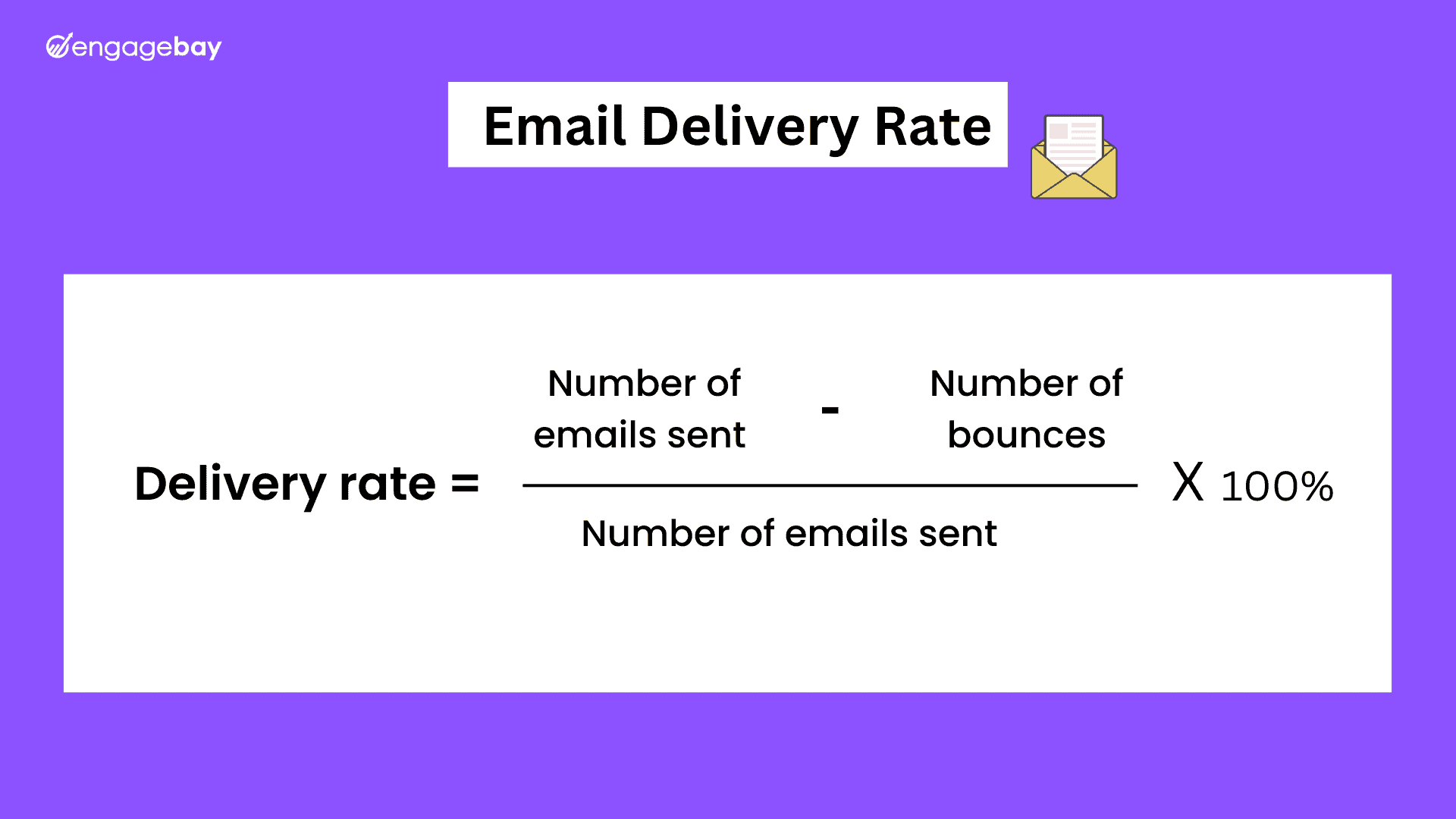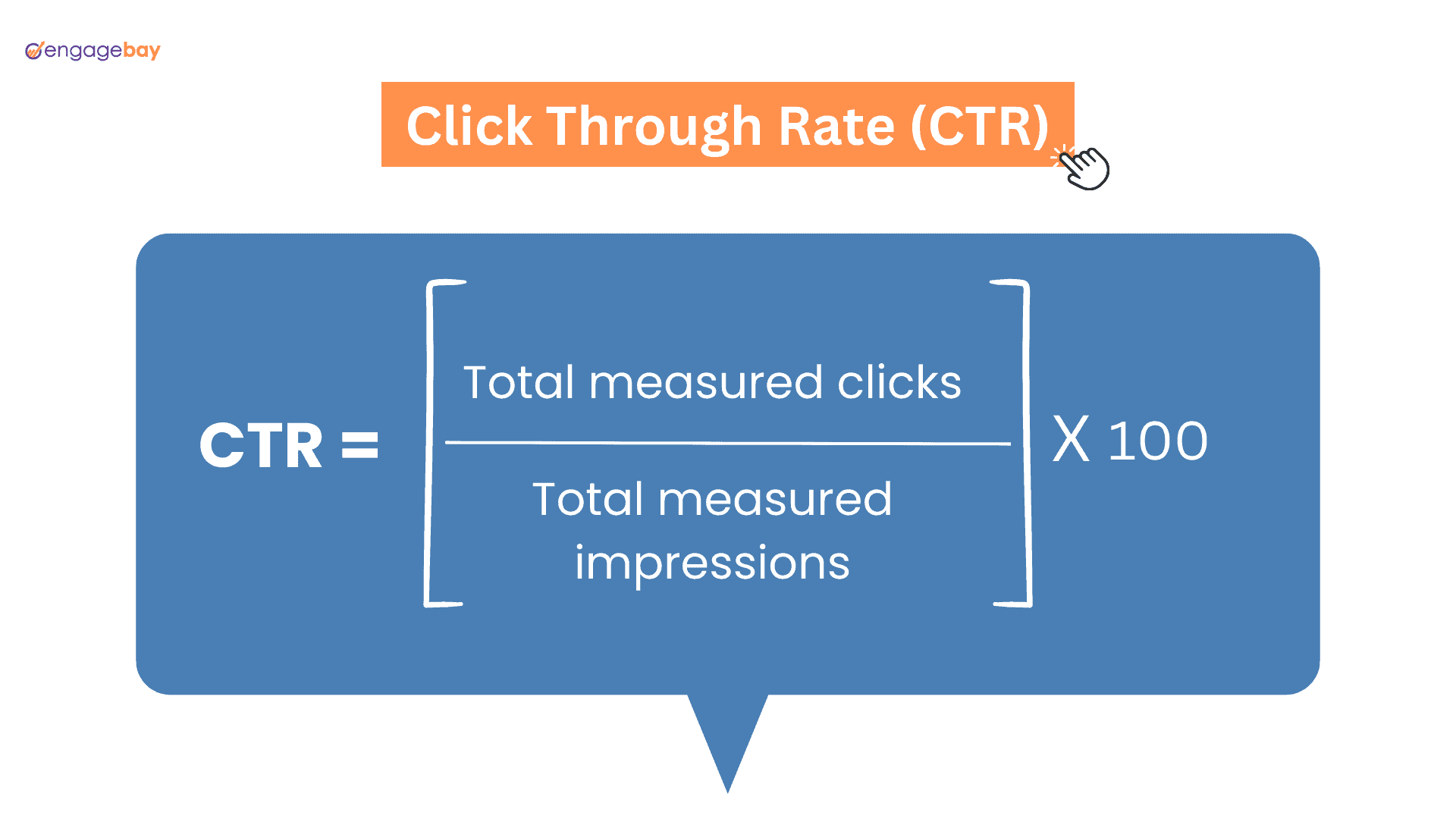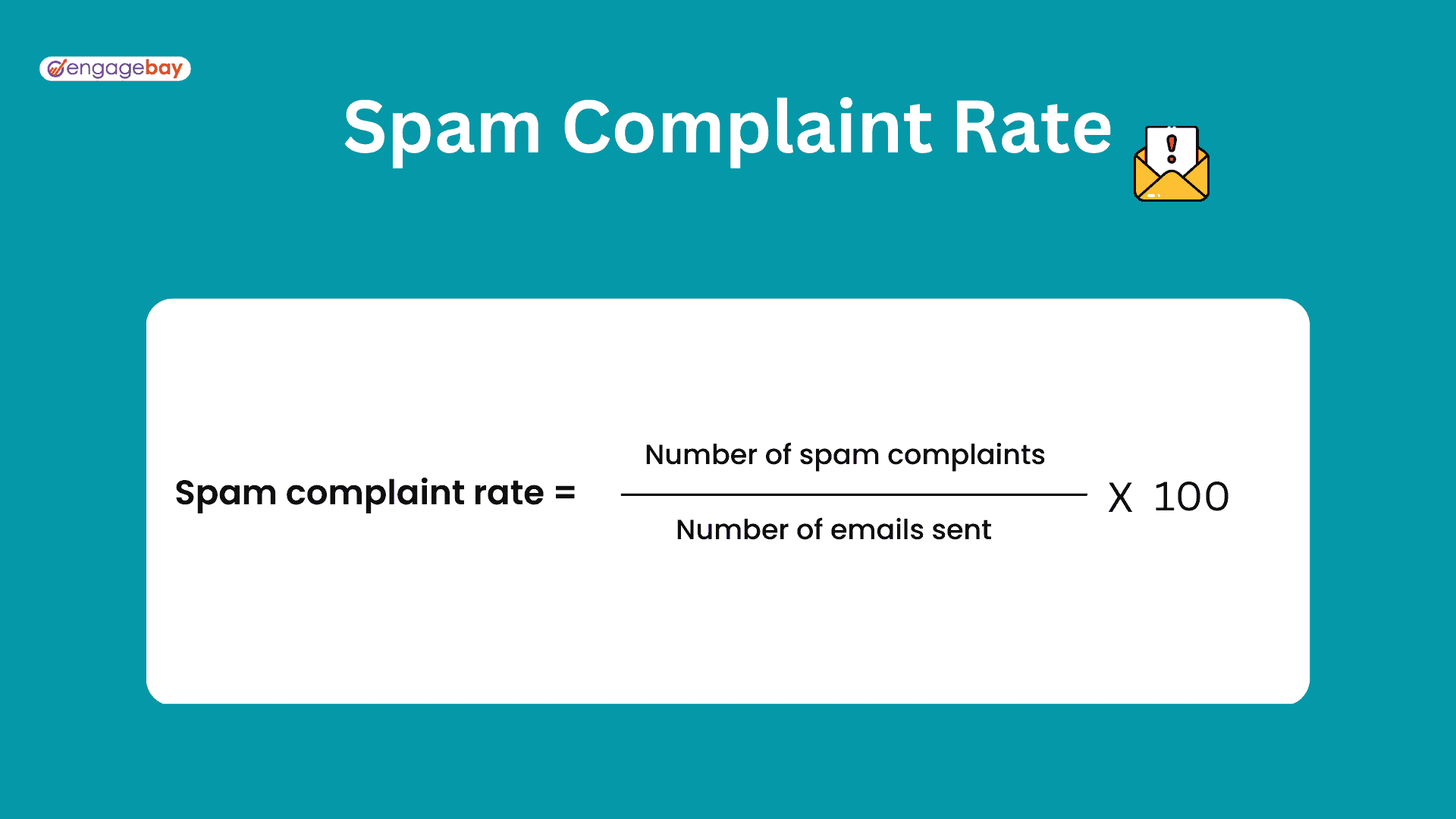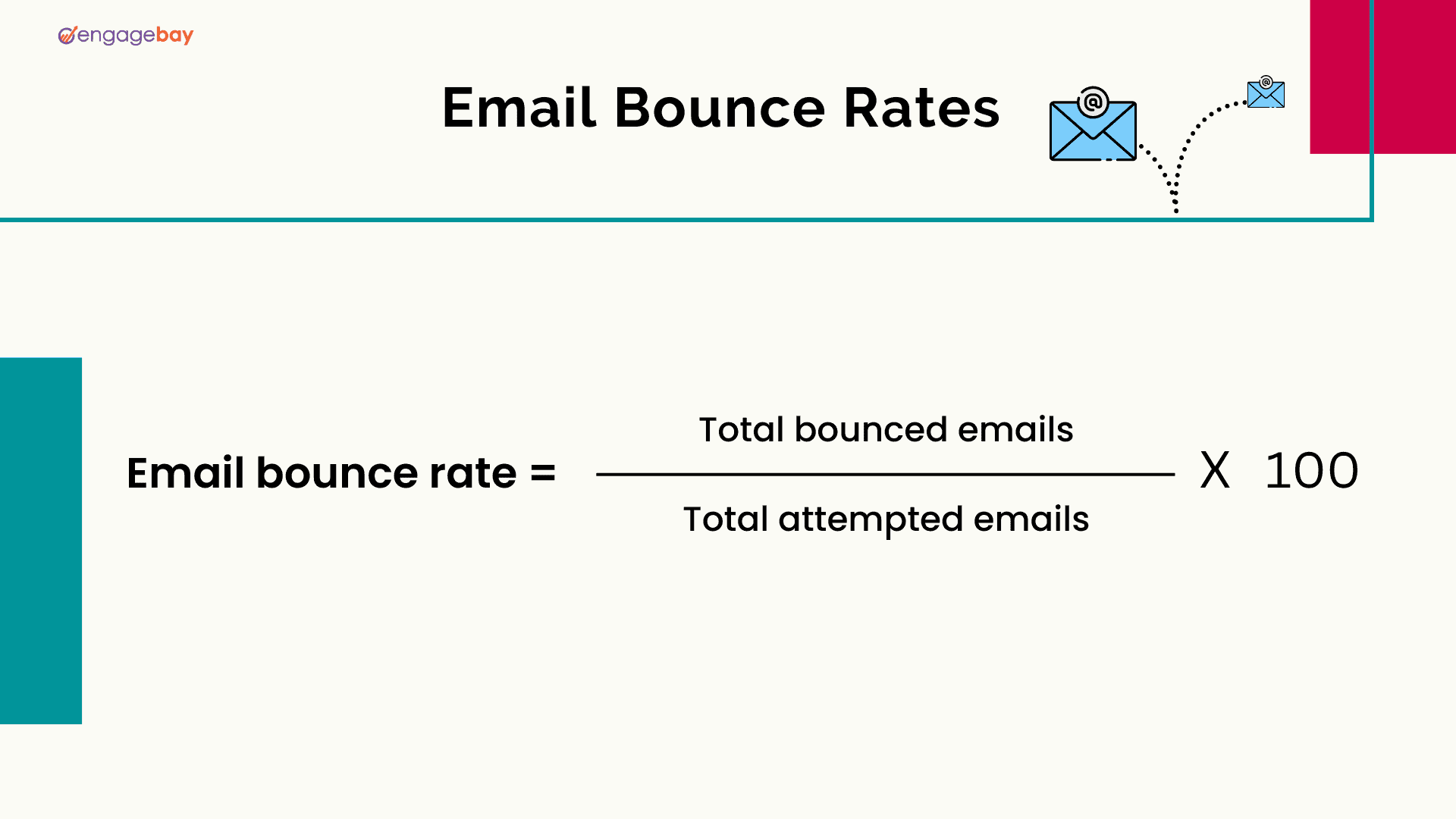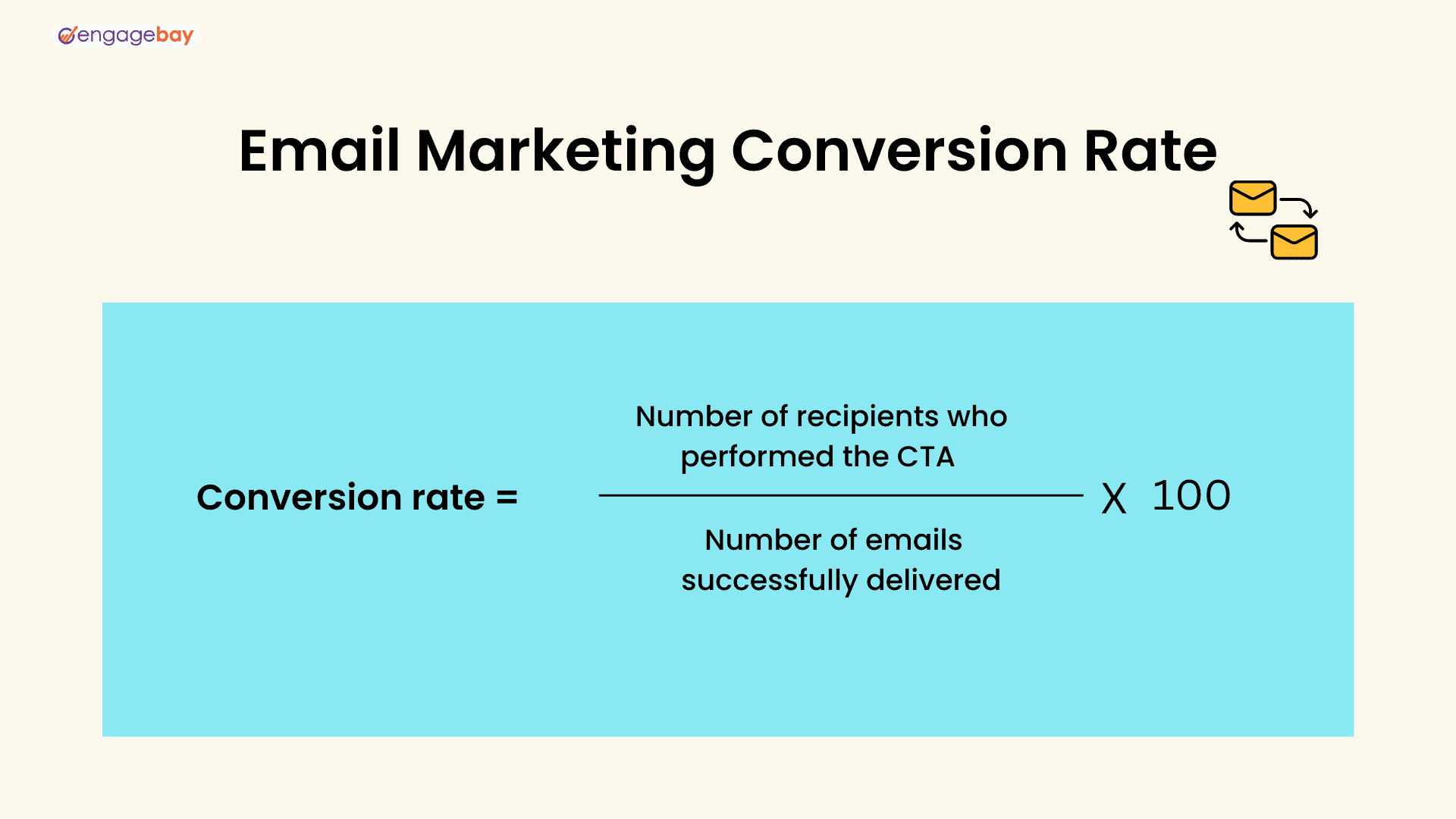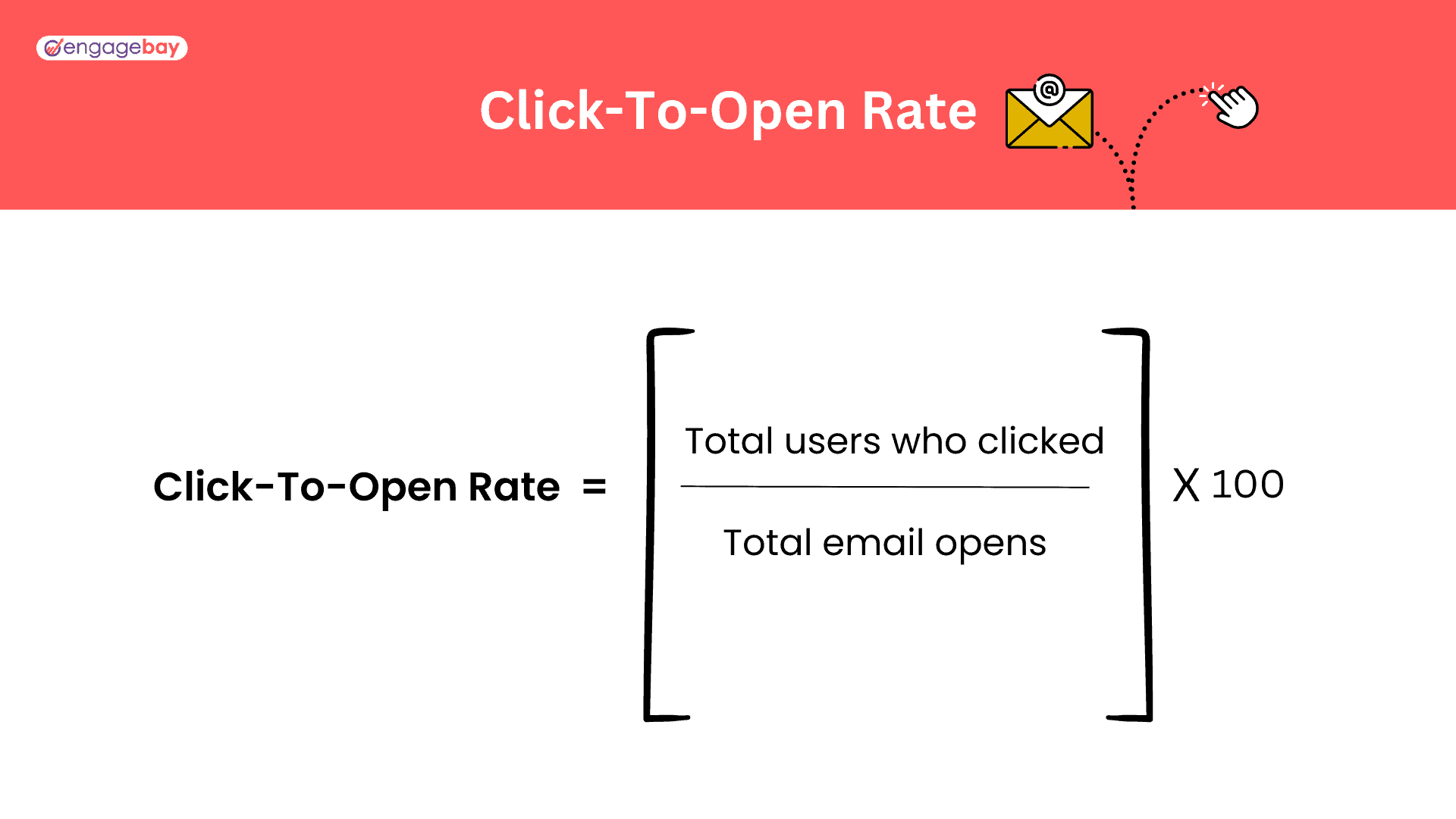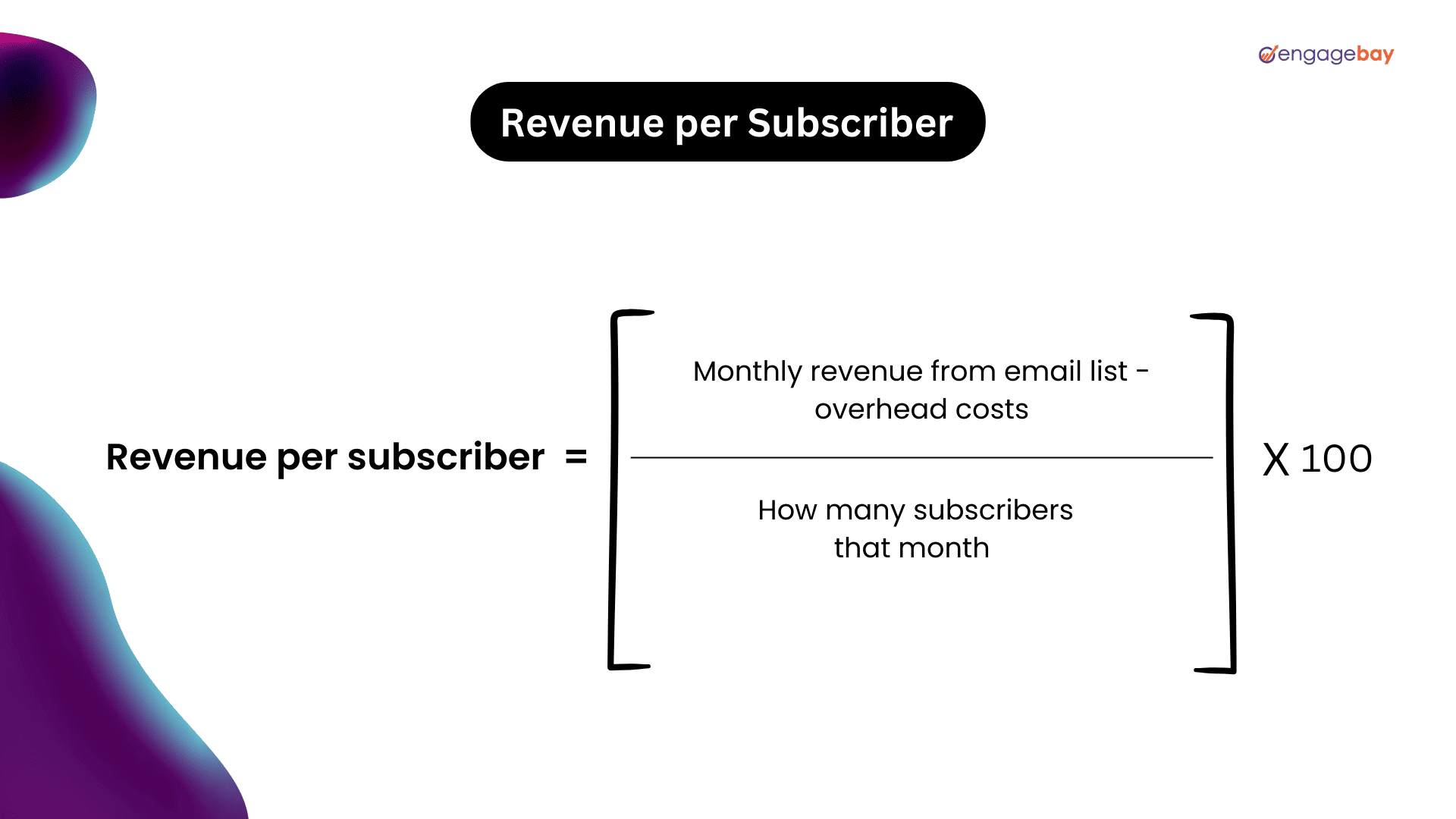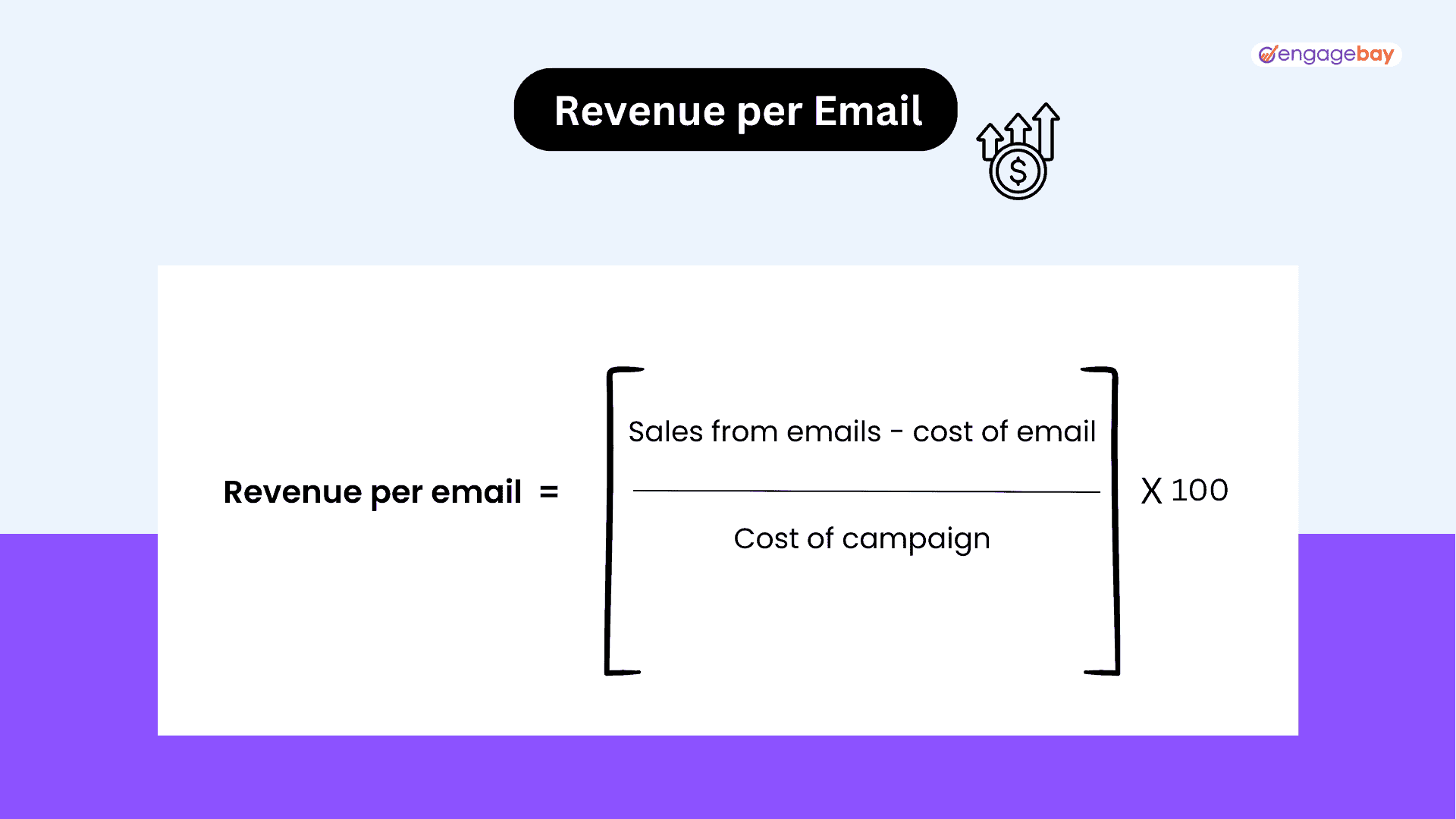Every marketer knows that amazing feeling after launching their first email marketing campaign. It’s often frustrating and exciting all at once.
But, how do you ensure that your email marketing strategies are effective?
Well, it’s all about measuring the right Key Performance Indicators (KPIs) and using that data to revise your marketing strategy.
And, we are here to help with just that. In this article, we’ll take a deep dive into the top email marketing KPIs crucial to your continued success.
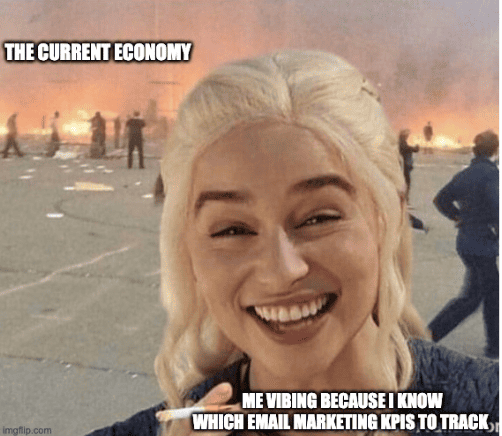
By the end of this article, you’ll get a clear breakdown of the following:
- What email marketing KPIs are and why you’d need them
- The 14 most effective email marketing KPIs for you to measure (with formulas)
Let’s get started!
Table of Contents
What Are Email Marketing KPIs?
KPIs, or Key Performance Indicators, measure the performance of different aspects of your marketing strategy or email campaign to determine its overall effectiveness.
In today’s competitive economy, you can’t just set up your marketing workflows and assume that things will just work out.
With the right tools, you can get a wealth of data on your email marketing campaigns. This might include data like how many emails were opened by your subscribers, how many of them responded to the call-to-action (CTA) button, and much more.
Now, many marketers make the rookie mistake of only measuring 4-5 email marketing KPIs. Or, some marketers may need clarification about which marketing KPIs they would need, and lose sight of their overall marketing strategy goals.
Read on to understand how you can avoid these mistakes.
👉 Elevate your email marketing with our free email templates designed to boost engagement and conversions.
Read more: Track These 15 Marketing Metrics to Grow Your Small Business
Measuring KPIs for Email Marketing: How To Get Started?
Some companies make the mistake of assuming that if they’re generating new leads consistently, then that means that their marketing strategies are working. In reality, this is far from the truth.
The first step as you choose the right email marketing KPIs to track is based on the goals of your various marketing strategies. Here are some common end goals most marketers work with across industries:
- Lead generation
- Educational content (curated blog posts or downloadables)
- Brand awareness
- Collecting more data about subscribers’ interests
- Re-engagement of inactive subscribers
For example, when you send emails with the goal of lead generation, your email open rates might be lower than emails aimed at re-engagement. That doesn’t necessarily mean your marketing strategy has failed.
Here’s a list of 14 effective email marketing KPIs you should measure regularly. They include all the goals mentioned above.
Read also: 20 Actionable Email Marketing Tips That Drive Results
14 Crucial Email Marketing KPIs For Performance Perfection
Here are our picks for the most essential email marketing KPIs.
1. Email delivery rate
As you probably already know, not all emails you send out will make it to the recipient’s inbox. This could be for a variety of reasons.
Of course, your email copy is vital in boosting delivery rates. But, it’s also influenced by your email service’s domain reputation. The lower your domain reputation, the harder it gets to pass the spam filters.
Email delivery rate is the percentage of total emails you’ve sent minus the soft and hard-bounced emails. Bounces are just emails that, for some reason, did not make it to the recipient’s inbox.
Here’s an easy formula for calculating your email delivery rate. We recommend you track the email delivery rates for all your email marketing campaigns, regardless of your end goal.
👉 Boost your marketing strategy with our customizable email templates that drive results.
2. Click-through rate (CTR)
The click-through rate (CTR) measures the percentage of recipients who clicked on the call-to-action (CTA) button or link after opening your email.
It’s a good thing when your recipients open your emails, right? But, it’s hardly good enough to measure the success of your email marketing campaign.
When you’re sending marketing emails, it’s equally important that your recipients also click on the call-to-action (CTA) button or link in the email.
This means your prospect has taken action toward moving to the next stage of the sales funnel. As an email marketing KPI, the click-through rate (CTR) measures just that.
For example, let’s say you’ve run two email campaigns. The email for ‘Campaign A’ was viewed 5,000 times and clicked on 50 times. Whereas, the email for ‘Campaign B’ was viewed 10,000 times and clicked on 200 times.
So, how do you calculate which campaign performed better? The answer is simple — calculate the CTR for both campaigns.
Here’s a simple formula you can use to calculate your CTR accurately.
Remember that a CTR of 2-4% is average, so you should aim for a CTR in this range or above. Here are the average click-through rates across industries for your ready reference.
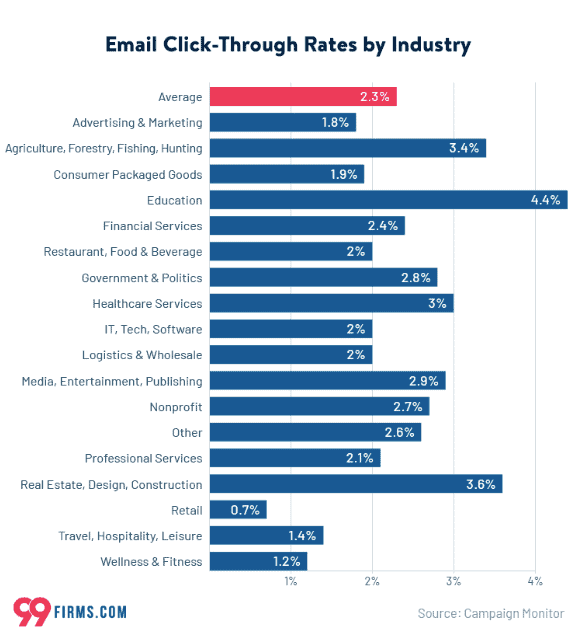
3. Unsubscribe rate
The unsubscribe rate refers to the number of people who have opted out of receiving your emails. The unsubscribe rate is calculated by dividing the number of unsubscribed by the total number of emails delivered.
Now, people may unsubscribe for a wide variety of reasons like losing interest in your product or content, receiving unsolicited emails, change in their preferences, etc.
But, email unsubscribes are not necessarily a bad thing. It can give you a wealth of insights into the content your audience enjoys and how you can keep them better engaged.
And, at times, it may also be an inaccurate marker of engagement. This is because many people may just ignore your emails without unsubscribing.
So, while this is definitely a KPI you must measure, it works best when considering unsubscribe rates with other email marketing KPIs.
On average, an unsubscribe rate of 0.5-1.5% is standard across all industries.
Read also: Marketing Automation KPIs You Need Like Coffee (Must-Have)
Enhance Your Email Marketing
Want to make your emails more impactful? Check out our beautiful, easy-to-customize recruitment and marketing email templates. Designed to boost engagement, these templates from EngageBay will help your emails stand out. Just customize the images, headings, and CTAs for your brand, and hit send in a few minutes!
4. Spam complaint rate
We all know about the prominent ‘This is spam’ buttons on all major email platforms. And, the more subscribers mark your emails as spam, the higher your spam complaint rate goes.
The spam complaint rate is the number of emails your subscribers have marked as spam compared to the total number of emails you’ve sent.
Suppose you’ve sent out 6,000 emails in the past month. Out of this, 6 people have marked your emails as spam. In this case, your spam complaint rate would be 0.001%. Here’s an easy formula for you to calculate your spam complaint rate:
All major inbox providers like Gmail or Yahoo will check your spam complaint rates. If your spam complaints are above industry standards, then it lowers your email deliverability in the long run.
On average, the standard spam complaint rate across industries is 0.1%. Anything above this is considered too high, and you must re-work your email marketing strategy.
👉Ready to skyrocket your email engagement rates? Uncover the top trigger email marketing tactics in our extensive guide! 🚀
5. Forwarding rate (or email forwards)
We all know that feeling when we stumble upon excellent content online. And, we immediately want to share it with our friends and family.
It’s often a goal for marketers to improve their email forwarding rate. It shows that your audience is engaged and finds real value in your content.
The email forwarding rate measures how many subscribers have shared or forwarded your email to their close ones or colleagues.
Here’s the formula to calculate your email forwarding rate in a jiffy.
Recent studies by Forbes have shown that over 80% of consumers make purchase decisions based on social media shares from their family and friends.
So, take small but productive steps like adding social share buttons on your emails and launching shareable content to capitalize on this.

6. Email bounce rate (both hard and soft)
This is one metric almost every marketer keeps a close eye on, and for a good reason!
The email bounce rate measures the number of rejected emails that didn’t make it to the recipient’s inbox. We generally include both hard bounces and soft bounces in this KPI.
Here’s the formula to calculate your email bounce rates.
What’s the difference between a hard bounce and a soft bounce?
Hard Bounce: This usually occurs when there’s a permanent problem, and you can no longer mail this recipient in the future.
Often, a high number of hard bounces are a logistical nightmare for marketers as it affects your sender score and email deliverability in the long run.
An email could have hard bounced due to various reasons, including:
- The email address is no longer valid
- Invalid domain name
- The recipient has blocked your emails
Soft Bounce: This usually occurs when there’s a temporary problem with delivering the email to the recipient’s inbox.
An email could have soft bounced due to the following reasons:
- The recipient’s inbox is full
- A temporary issue with the recipient’s server
- Your email was too large
To avoid hard bounces, marketers typically remove that contact from their list. That’s the first step. Optimizing the images and videos in your emails can prevent soft bounces. Ensure that it’s not too large.
Remember, it may or may not be the sender’s fault when it comes to bounce rates. The accepted benchmark bounce rate for emails is between 2-4%. Anything over this is generally considered a poor performance.
👉 Enhance your campaigns with our free, customizable email templates that drive results.
Read also: What Is an Email Conversion Rate? Examples and Tips
7. Email marketing conversion rate (CR)
When it comes to email marketing, your conversion rate depends upon the goal of the email campaign. Not every campaign is aimed at lead generation.
Email marketing conversion rate (CR) is the percentage of recipients who have completed the desired action after reading your email. This could range from buying your marketed product, scheduling a demo request, or clicking the pricing link.
The major difference between click-through rate and conversion rate is its location in the sales funnel. Generally, click-through rates measure desired actions taken at the beginning of the sales funnel.
And, the conversion rate is calculated for customers in the middle or bottom of the sales funnel. Ideally, we recommend calculating both for all your email marketing campaigns.
Here’s the formula for calculating your email marketing conversion rates.
And, here are the average email marketing conversion rates for different types of emails:

8. List growth rate
Your list growth rate measures how rapidly your email list or subscriber list is growing over a specific period.
Of course, we don’t mean that all your subscribers will be your customers too. Some prospects may have just engaged with your blogs or external marketing. These prospects are also included in your list growth rate.
Here’s how you can calculate your list growth rate.
This email marketing KPI becomes more important for rapidly scaling companies.
But, at the end of the day, the quality of your subscriber list is just as important as the quantity. So, don’t try to boost your email list with purchased addresses and so on. Always focus on quality over quantity to win the long marketing game.
Read more: 16 Key Sales KPIs for Small Businesses — Boost Your Revenue
9. Most and least engaged contacts or subscribers
Most marketers agree that maintaining an engaged list of contacts or subscribers is their most prominent email marketing issue.
You can use email marketing platforms or a customer relationship management (CRM) platform to track how active and engaged a subscriber has been. Marketing automation can give you very quick and accurate results.
Once you get all this data from your CRM system, you’ll need to segment the list based on temporarily inactive users and users who seem permanently inactive.
For example, ‘Subscriber A’ may have been inactive for a few weeks but engaged with your content in the past. ‘Subscriber B’ may have been inactive right from the time they signed up. Here, ‘Subscriber A’ would be temporarily inactive.
We recommend that you remove all subscribers who have been inactive for too long. If a subscriber seems temporarily inactive, you can start a drip email campaign to target their pain points and try to re-engage them.
Read also: Essential Email Benchmarks For Small Business Success
10. Click-to-open rate (CTOR)
This is one of the most important email marketing KPIs you can master.
The click-to-open rate measures the percentage of subscribers who clicked on a link in your email out of the total number of subscribers who opened the email.
However, you can’t really use the click-to-open rate in isolation. You’ll need to combine this email marketing KPI with others, like email open rates and conversion rates, to get a 360-degree view of your email marketing campaign’s performance.
You can measure your click-to-open rate for emails based on this formula.
A higher click-to-open rate means that your content is pretty engaging or interesting for the subscriber. But, it may or may not result in a conversion. The CTOR is a useful KPI to measure the quality of your content.
Don’t get the CTOR confused with the click-through rate (CTR). The click-through rate (CTR) measures the number of subscribers who clicked a link out of the total number of emails sent.
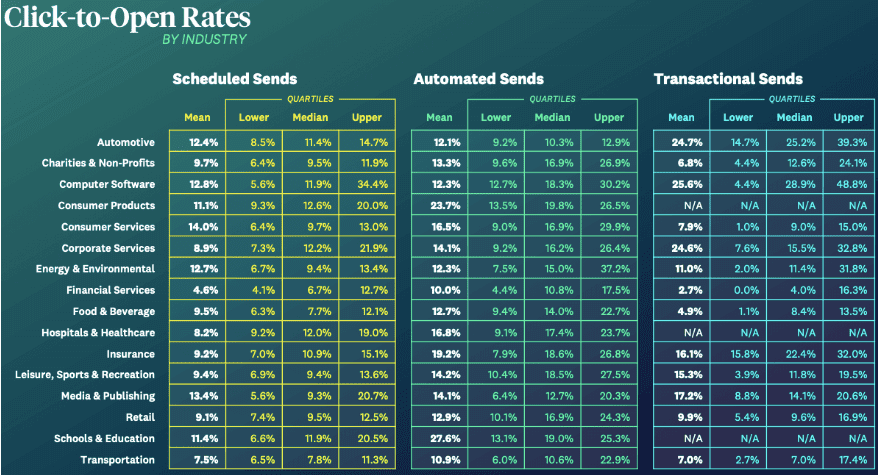
11. Track clicks by link/URL
Now, when you send a marketing email, you may have included several links or URLs in the email. This could include your website link, social share links, link to a particular product page, or blog post links.
How do you know which subscriber clicked on what link? Simply by tracking your clicks by link or URL.
Tracking email clicks by link or URL through Google Analytics or other platforms means you closely monitor the number of clicks on any links in your emails. If there are multiple links, you’ll have to measure them separately using UTM (Urchin Tracking Module) parameters, even if they’re part of the same email.
This email marketing KPI can give you specific insights into customer behavior based on location, and customer preferences. Here’s the Google Analytics dashboard that tracks multiple links in a single email.
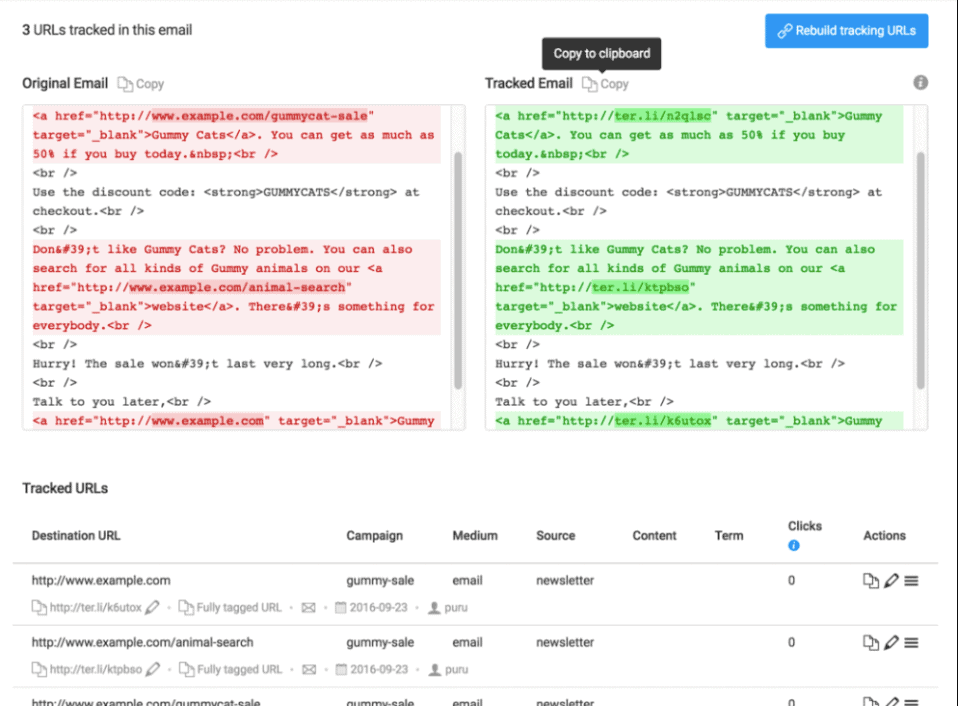
Read also: eCommerce Email Marketing Simplified: 15 Examples + Tips
12. Revenue per subscriber (RPS)
This is an extremely useful email marketing KPI that you need to track. Essentially, it can give you information about how much you gain by sending each email and how much money you can invest in acquiring new ones.
The revenue per subscriber (RPS) is a measure of the average lifetime value of a subscriber or the average revenue generated per subscriber for an email campaign.
Here’s how to calculate your monthly revenue per subscriber on your email list.
To boost your revenue per subscriber (RPS), you can focus on improving your subject lines, reducing bounce rates, and carefully segmenting your email subscriber list.
Read also: How to Maximize Customer Engagement With an Email Journey
13. Revenue per email (RPE)
This is another email marketing KPI that marketers need to track regularly. It’s pretty much what the name suggests.
Revenue per email (RPE) measures how much revenue you’ve generated from sending marketing emails. It’s calculated by dividing the total revenue generated from emails by the total number of emails sent.
Get started by using this formula to calculate your RPE for a pre-defined period.
Although the revenue per email (RPE) is less accurate than calculating your ROI, it effectively measures the revenue generated from your email marketing efforts. It’s also much easier than calculating your ROI.
Now, there aren’t any industry-specific benchmarks for a good RPE, but, ideally, your RPE should at least be equal to or exceed the amount you’ve invested in email marketing.
👉 Optimize your marketing efforts with our email templates designed for efficiency and impact.
Read more: Here Is Your To-Do List of 9 Tasks for High Email Deliverability
14. Overall email marketing return on investment (ROI)
Return on Investment (ROI) is one of the most popular profitability ratios. Ideally, every marketer should master this particular email marketing KPI.
Email marketing return on investment (ROI) measures how profitable your email marketing campaign is, depending on the amount you’ve invested in email marketing.
Get started with calculating your email marketing ROI using this formula.
Now, depending on your company, you might consider using a more complex equation to calculate your overall email marketing KPI.
Generally, email has the highest ROI when compared to other channels.

To improve your overall email marketing ROI, we suggest enabling email automation wherever relevant, sending personalized content, and optimizing your emails for mobiles and tablets.
Wrap Up
Try EngageBay’s all-in-one platform with free CRM to streamline how you collect data for your email marketing KPIs.
With automated delivery of your marketing metrics straight into your inbox and live metric tracking features, you’ll save time and valuable money with EngageBay.
You’ll also be able to generate various graphs to get deeper insights into whether your marketing strategies are effective.
Get in touch with our team to find the right pricing plan for you and schedule a demo!
👉 Have you tried our email templates? Share your experience in the comments below, and let us know how they worked for your campaigns!


